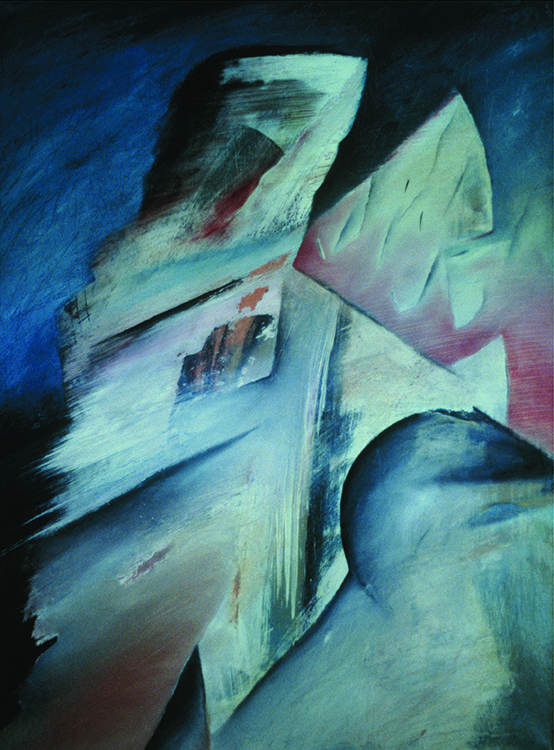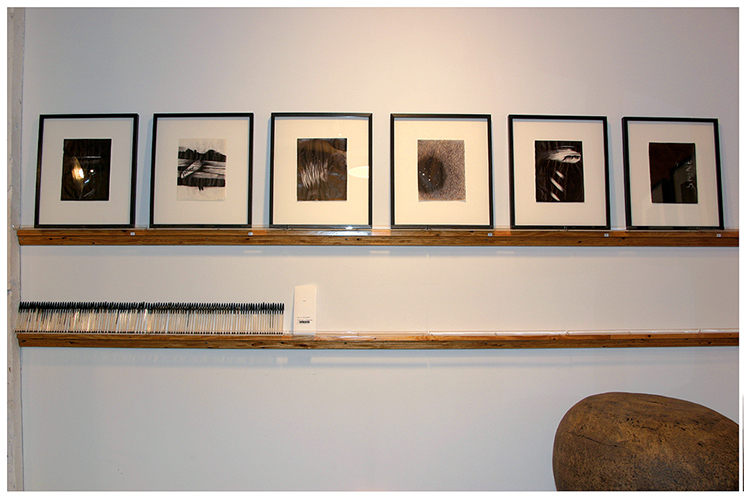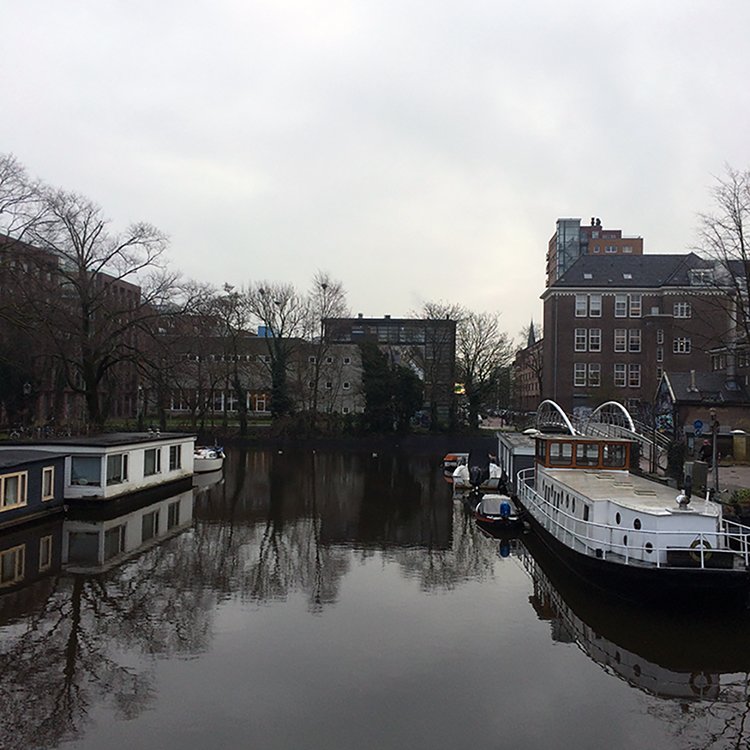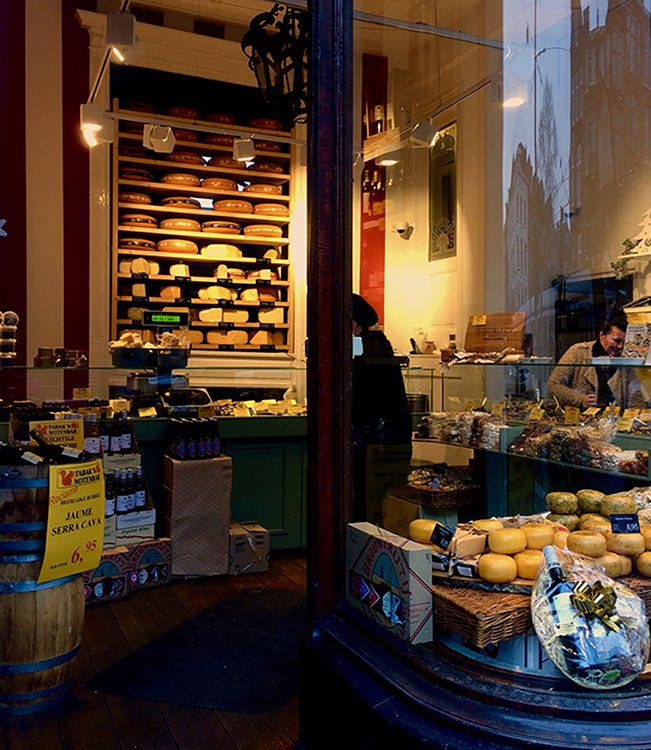Hammer :: Oil and Latex on Canvas :: 48” x 48” :: 1981
Once I drove from Minneapolis to Bend in a cargo van loaded with artwork because everything was going to be installed in a show. I had four boxes of framed ink drawings, three five-foot square wrapped canvases, and a couple of smaller paintings. The three larger canvases could only fit diagonally in the space, so it looked a little inefficient, but they fit, with room for a couple of smaller paintings, some miscellaneous tools and traveling gear tucked into the leftover spaces. On my drive west, I stopped at my parents’ house in Montana and stayed overnight to pick-up Hammer, a four-foot square painting which we also planned to hang if the space could accommodate it.
After I painted it in college and before I moved from Montana a few years later, I stored It in my parents’ basement along with other artwork and boxes of stuff. During art school, Hammer always sat off to the side somewhere. It always seemed to be a bit of an outlier for some reason. Not that my other work was cohesive, but this one seemed even more different. I can’t explain why. It just felt different. I was attached to it though so whatever it was, I knew it was something I needed to pay attention to.
After my initial show, the gallery stored my work for six months and included a piece or two in subsequent group shows that they mounted. During one of the shows, Hammer was purchased by a man named John. I never met him, and I wasn’t involved in the transaction in any way, but I did cash his check, so I know that it happened. I got his contact information from my freinds, the gallery owners, and eventually wrote to him. He lived in Portland. I thanked him and let him know how happy I was that he purchased it and gave it new life. I didn’t receive a response, so I still don’t really know its fate, or John’s status, but I hope they’re fine.
Songs :: Moods for Moderns by Elvis Costello, Once Upon a Time In the West by Dire Straits, and Two Soldiers by David Byrne
© C. Davidson























